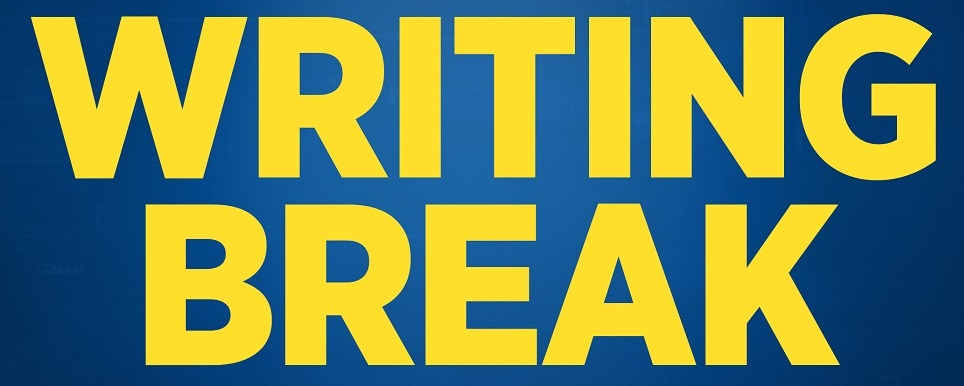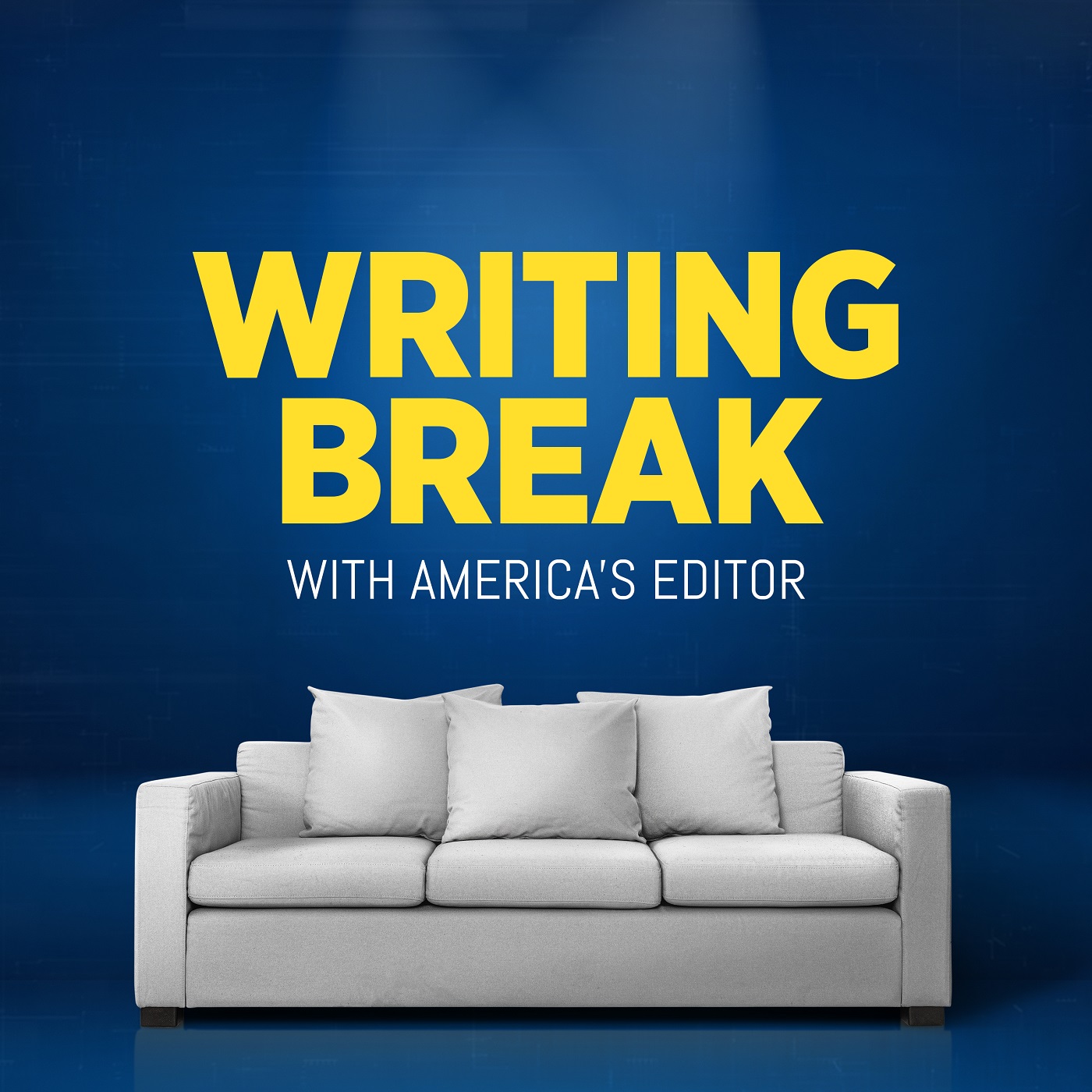Episode 27
All the Characters Your Book Needs
We are taking a look at the supporting characters in books to help you decide if your book has too many, too few, or just enough characters. We are also celebrating romance in the kitchen, new resources for writers, and book award nominees.
- Llibreria Finestres, Barcelona, Spain - Featured Bookstore
- Ricardo Devesa - Featured Author
- Announcing The Center for Fiction 2022 First Novel Prize Longlist | The Center for Fiction
- The Booker Prize 2022 | The Booker Prizes
- Romance Novels Are Increasingly Getting Hot and Heavy in the Kitchen - Eater
- Disability in Publishing
- Introducing Book Exploder
- Free Style Sheet Templates
- Free Writing Tips
Music licensed from Storyblocks:
“More Jam Please” by Raighes Factory
"¿Como Estan Mis Amigas?" by Tencher Music
"The House" by Adrian Berenguer
“Holiday Diaries” by Simon Sharp
“Brazilian Summer Full” by Sleeping Ghost
Transcript
There’s a party in the Writing Break studio today. We are celebrating romance in the kitchen, the supporting characters in your book, new resources for writers, and book award nominees.
The Writing Break cafe is open, so let’s share some tapas and a pitcher of sangria while I fill you in on the latest publishing news.
,:The books to be discussed are: The Library Book, Pachinko, In the Dream House, The Hours, An American Marriage, Tenth of December, Little Fires Everywhere, and Deacon King Kong.
I would like to tip my editorial visor to Disability in Publishing, a new organization in the USA run by and for disabled publishing professionals. Disability in Publishing launched in July, and they state that their mission is to “create community, provide resources, and increase accessibility across the industry in order to increase disability visibility and retain the talent of disabled publishing professionals.”
Disability in Publishing is not yet registered as a nonprofit, but they are working on it. On their website you will find ways to get involved, an agent directory, and an editor directory, which list literary agents and acquisitions editors who are interested in acquiring books with disability representation and working with writers with disabilities. There is also a freelancer directory featuring individuals who are open to freelance work and identify as a Person with Disability.
Food-themed romance is on the rise. While food has always been prevalent in books, publishers say it is becoming more intentional, and they admit to using a food theme as the selling point. If you’re cooking up a romance where food is a main part of the story or plot, well then, Chef, it’s time to plate.
The Center for Fiction:
Links to these lists and to all of these articles can be found in the show notes of this episode and on writingbreak.com.
And now, let’s ramble over to an independent bookstore.
tore began during lockdown in:Let’s take a look around and check out an independent author.
Outdoor Domesticity: On the Relationships between Trees, Architecture, and Inhabitants is a marvelous book by architect, curator, editor, teacher, and writer Ricardo Devesa. The first part of the book showcases homes that “evinced explicit relationships with preexisting trees.” This means that from the moment the architects arrived to survey the property where the homes would be built, they knew they would be leaving the trees that were already on the properties in place. Furthermore, the trees in these builds become an intrinsic part of the homes.
The second part of the book discusses concerns Devesa has for future architectural projects with respect to time, place, and outdoor domesticity in modern Western housing.
Outdoor Domesticity is available in English and in Spanish and is published by Actar Publishers, who publish forward-thinking books by established and emerging architects and designers.
Let’s take this to the register and then commandeer that dark green velvet couch to discuss today’s writing tips.
In the last two episodes we discussed protagonists and antagonists. Today we’re taking a look at the other characters in your books, the supporting cast members, if you will.
First, we have the protagonist’s allies. The Ron and Hermione to your Harry Potter. These characters help fill the story and advance the plot. Through conversations with the protagonist’s allies, we often learn a lot of backstory about other characters as well as the history and rules of the world you have built. They also often help the protagonist out of a jam or two.
Don’t you sometimes find it all too convenient, though? The protagonist’s allies show up just in the nick of time, or they fill the reader in through dialogue that sounds stilted or contrived. Often I find myself thinking, would two people who have been friends as long as these two characters have really say these things to each other? What’s more is that the protagonist’s allies sometimes read as though they exist in a vacuum. In some books, nothing seems to happen to the allies without the protagonist being present. It’s like they are stuck in suspended animation until the protagonist needs them.
As we discussed in previous episodes, it is important to keep in mind that every single character considers themselves the main character. Even though they are your protagonist’s allies, they are not baby deer stumbling around their mother. They are full-grown and living lives, especially in their minds, in which they are the main characters. Create the same character sketch you created for your protagonist and your antagonist. You might write down things about these characters that are never fully expressed in the book, and that’s okay. Having the character sketch will help you get to know the characters better; therefore, you will write better dialogue and a better plot.
Next, we have the pawns of the antagonist. They are not considered the antagonist’s allies because the antagonist’s personality usually prevents them from having real friends. And if they do have real friends, they will inevitably use and abuse them in some way. By doing so, the loyalty of the antagonist’s pawns often change when the pawns decide to stand up for themselves or sabotage the antagonist for their own gains or goals. Again, these people have their own full lives, which adds to the intricacy of the plot. They are pawns but not puppets.
To pull another example from Harry Potter, with my apologies, Narcissa Malfoy, Draco’s mother, is a good example of an antagonist’s pawn. Yes, she is Voldemort’s pawn, but she is also a mother. No spoilers.
For easy-to-grasp, almost cartoonish, examples of protagonist’s allies and pawns of the antagonist, watch the movie Mean Girls.
Let’s get ready to do some overthinking about what other characters should appear in your book.
So, we have our protagonist and their allies and an antagonist or two and their pawns. Note that not every antagonist has pawns. Who else is making an appearance in your book?
Well, that depends a lot on your genre and your specific book. For example, you might have a mostly solo character like Rambo. Or there might be a love interest locked in a castle somewhere who is more of a goal than a person. If you are writing a mystery, you might have a red herring.
Of course, rules can be bent if you’re crafty enough, and understanding your genre will help you write a book that will please your target audience.
Remember not to crowd the book. List scenes and the characters needed for those scenes, and try combining multiple characters into a single character.
Next week, we’ll start to look at your story’s structure. Until then, work on populating your book and remember, you deserved this break.
If you would like us to visit your favorite independent bookstore, feature your favorite independent author (even if it’s you), or discuss something you’re overthinking about, please email me at podcast@writingbreak.com.
Thank you for making space in your mind for The Muse today.
Writing Break is hosted by America’s Editor and produced by Allon Media with technical direction by Gus Aviles. Visit us at writingbreak.com or contact us at podcast@writingbreak.com.



